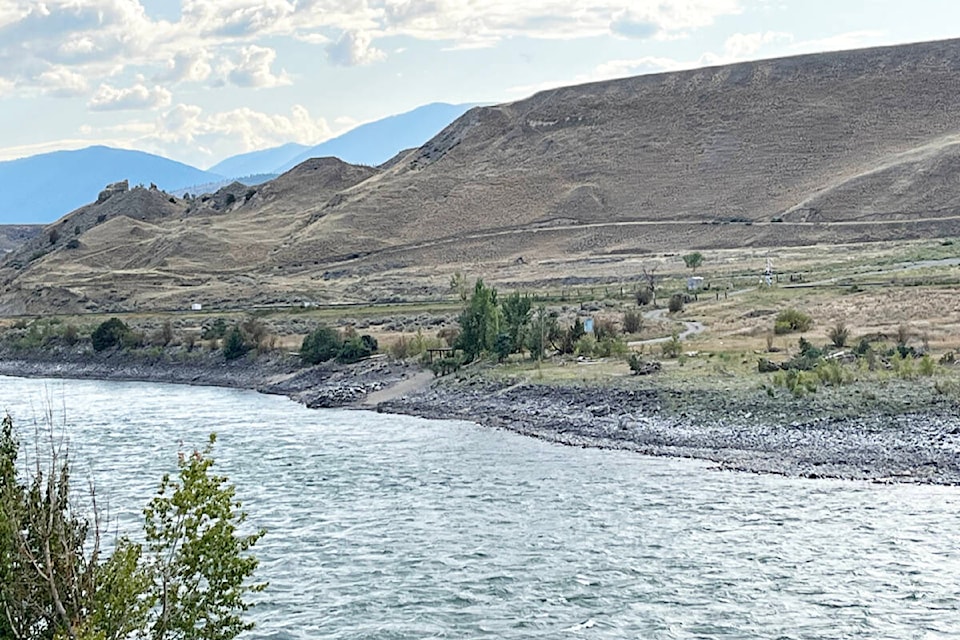The Thompson River is at its lowest level ever recorded for this time of year, with drought conditions exacerbating the worst wildfire season the province has ever seen. Some 2,072 wildfires have burned more than 2.189 million hectares so far this year.
At the beginning of April, the Thompson River at the Overlanders Bridge in Kamloops was at 1.7 metres, the lowest measurement at that time of year since data collection began in 1911. Last week the province said that water levels on the Thompson River were also at a record low for this time of year.
“River levels on the Thompson River at Kamloops river gauge are two metres below what is normal for this time of year, and 15 centimetres lower than the record low for this area, breaking a 112-year record,” the Ministry of Forests said in a statement to Castanet News.
At a wildfire update on Aug. 31, Emergency Management Minister Bowinn Ma announced that the province was extending the B.C.-wide state of emergency — which was put in place on Aug. 18 — for another two weeks. She was joined at the update by Forests Minister Bruce Ralston.
Ma said the current weather is a sign that the province is moving slowly beyond the worst parts of the wildfire season, but a “balanced perspective” is needed. She noted that 27 of the province’s 34 water basins are at the two highest drought levels.
“While a handful of basins have kicked down a step, we have not experienced anywhere near the rainfall needed to see those levels come down in a significant way,” she said. “In the northern part of the province, they didn’t see nearly the same level of rain as southern and coastal regions.”
The Lower Thompson Basin is one of 19 water basins at Level 5, the highest drought level. It means that adverse impacts to communities and ecosystems are almost certain to occur.
“The weather and rain in the southern half of the province will allow crews to make good progress in the coming days,” said Ralston on Aug. 31, adding that the BC Wildfire Service has shifted some crews and aircraft to the north in anticipation of increased fire behaviour.
“While these rains are welcome, at this stage, they are not big enough, significant enough, to change the trajectory of the ongoing drought conditions here in the province.”
Ralston explained that the drought is continuing to worsen and get much more severe in most of the province. Several factors have contributed to this year’s drought, including less rain than usual over the last 12 months, an unseasonably hot early fall with below average rainfall in 2022, and an early snow melt this past spring.
“At this point, we need several inches or more of rainfall over an extended period to help alleviate our drought conditions,” said Ralston. He added that as significant rainfall does not usually come until the fall, it means that much of B.C. can anticipate drought conditions to persist through the province for the next while.
The province has requested many water licence holders — including the Village of Ashcroft and the City of Kamloops — to reduce their water consumption.
“We are requesting that all water users increase their water conservation measures and, as one of the largest water users in the [Thompson] watershed, we are requesting that you reduce your consumption by 30 to 50%,” the province told the Village of Ashcroft in a letter dated Aug. 3.
Ashcroft introduced Stage 2 water use restrictions on Aug. 12. Prior to that date, the average daily use was 5,238 cubic litres. As of Aug. 30, that figure had dropped to 3,812.9 cubic litres daily, a decrease of 27 per cent. In Kamloops, which has introduced even more stringent water use restrictions, daily usage has dropped 29 per cent compared with last summer’s usage.
Daily water use figures, as well as the full letter from the province, can be viewed on the village’s website at https://ashcroftbc.ca/water-conservation/.
